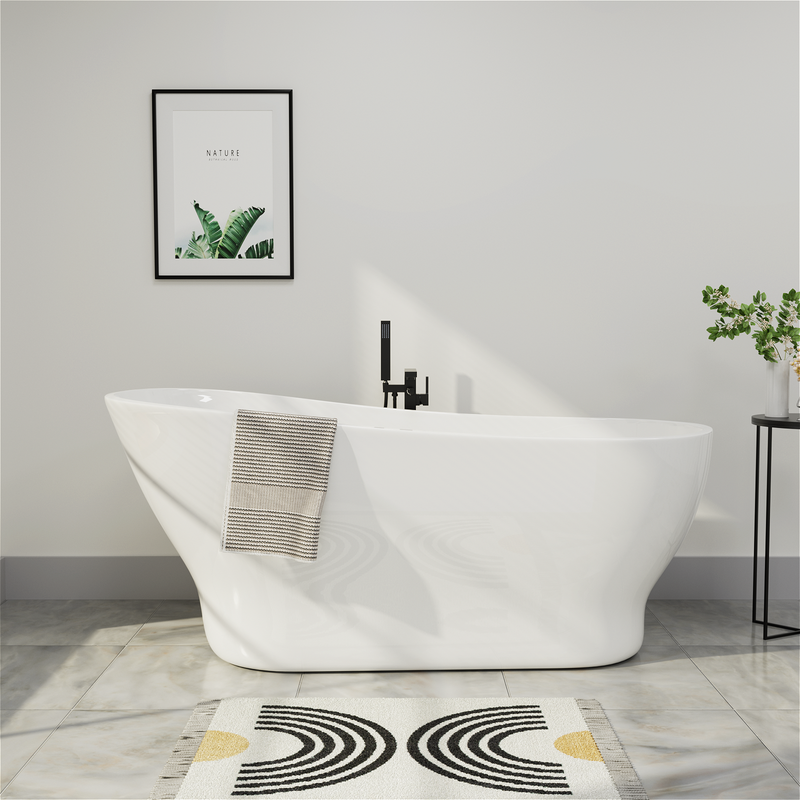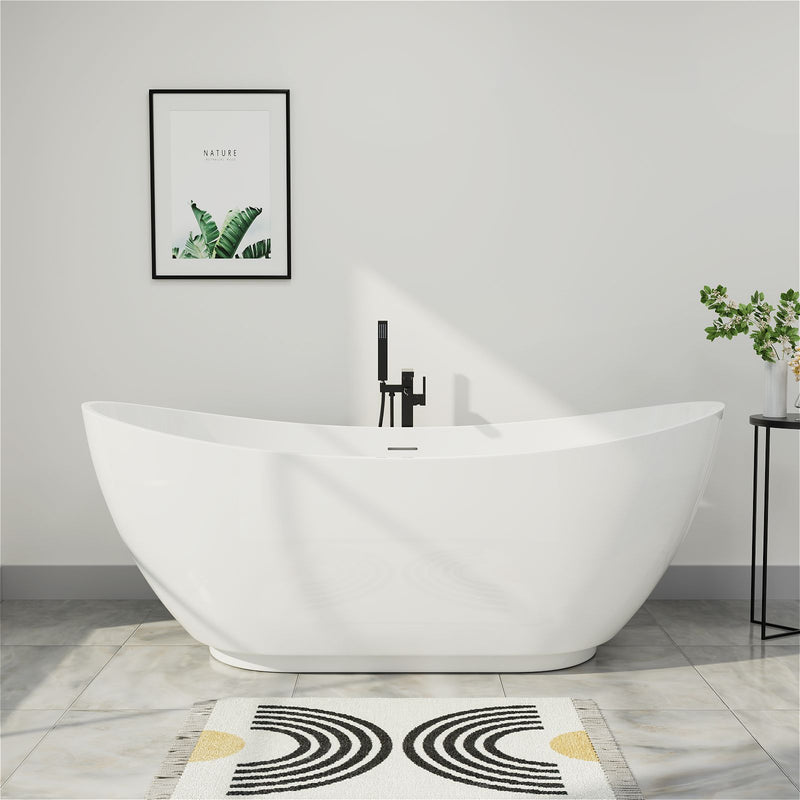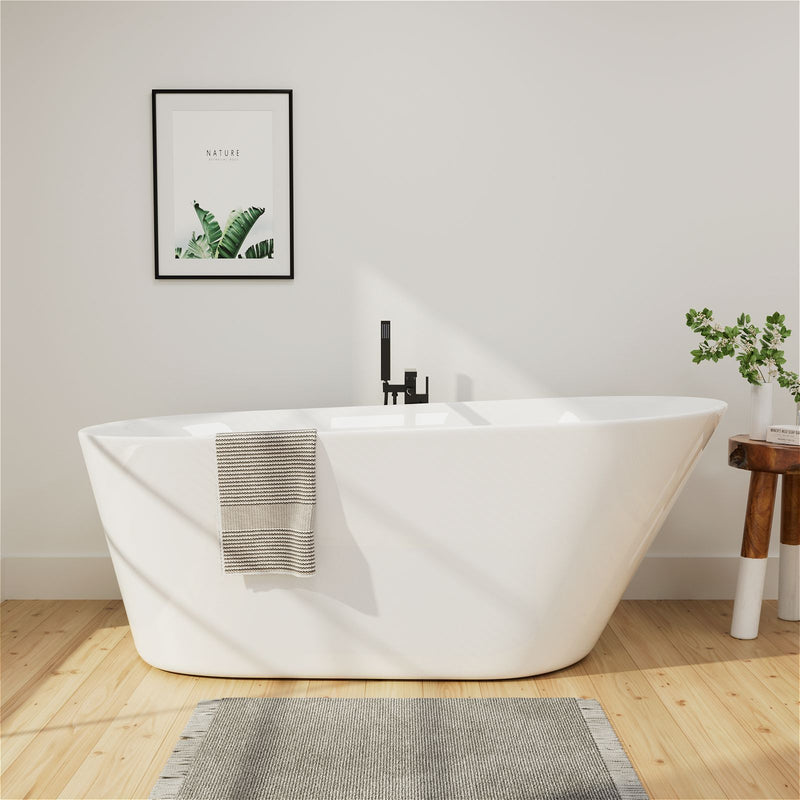A well-designed bathroom combines daily functionality with personal sanctuary, and at the heart of this space often lies a choice: bathtub, shower, or both? For many American households seeking a blend of comfort, practicality, and aesthetic appeal, the acrylic bathtub shower combo has become a premier solution. These versatile fixtures efficiently merge the relaxing soak of a tub with the quick convenience of a shower, all while offering a sleek, modern look. Crafted from high-density acrylic materials, they deliver a compelling mix of durability, warmth retention, and design flexibility, making them a popular choice for everything from master suite renovations to family bathroom updates. Their non-porous surface resists stains and microbial growth, ensuring a cleaner and more hygienic environment. If you're contemplating a bathroom upgrade that maximizes space, simplifies cleaning, and enhances your home's value, understanding the ins and outs of acrylic tub-shower combinations is the perfect starting point.
Why Choose an Acrylic Bathtub Shower Combo?
Acrylic has become a dominant material in the bathroom fixture market for good reason. It offers a unique set of physical properties that make it exceptionally suited for both bathtubs and shower environments.
First and foremost, acrylic is remarkably lightweight compared to traditional materials like cast iron or steel. This makes it significantly easier to handle and install, particularly in multi-story homes or projects where navigating tight spaces and stairwells with a heavy fixture would be a major challenge. Despite its light weight, high-quality cast acrylic is also highly durable. It possesses a inherent flexibility that allows it to withstand minor impacts and daily use without cracking, chipping, or denting—a common issue with harder but more brittle materials.

Another significant advantage is its excellent thermal insulation. Acrylic feels warm to the touch and retains heat far better than metal or fiberglass, keeping your bathwater warmer for a longer period. This translates to a more comfortable and luxurious soak, as well as potential energy savings from using less hot water. The material is also inherently non-porous when solid, meaning it won't harbor bacteria, mold, or mildew within its surface. This makes it easier to clean and maintain a hygienic environment, especially when paired with technologies like Bio-Lok microbial shields that further resist microorganism accumulation.
From a design perspective, acrylic is incredibly versatile. It can be thermoformed into a vast array of shapes, sizes, and configurations. This allows manufacturers to create everything from compact, space-saving alcove tubs to luxurious, free-standing soaking tubs with integrated showers. The surface can be finished in a high-gloss sheen for a classic, reflective look or in softer, matte textures for a more contemporary feel. While white remains a timeless choice, acrylic can be manufactured in a wide spectrum of colors to match any décor, from calming blues and greens to bold, statement-making hues.
Finally, acrylic combos are known for their balance of affordability and value. While premium options exist, they generally offer a more accessible price point than cast iron or copper alternatives, while still delivering on longevity and performance. This makes them an excellent investment for both immediate enjoyment and long-term home value.
Key Design and Configuration Options
Today's acrylic tub-shower combos are not one-size-fits-all. They come in a variety of layouts to suit different bathroom footprints, user needs, and aesthetic preferences. Understanding these configurations is key to selecting the right model for your space.
The most common type is the alcove or recessed unit. Designed to be installed against three walls, this space-efficient design is the standard for many American homes and apartments. It neatly tucks into a designated nook, making it ideal for smaller bathrooms. These units often include integrated shower walls or can be paired with custom tile walls, and they typically come with a shower curtain or door enclosure to contain water.
For those with a bit more space, a corner unit can be an efficient choice. These triangular or angled combos are designed to fit snugly into a bathroom corner, often making use of space that might otherwise be underutilized. They can create a more open feel in the room and sometimes feature built-in shelving or seating.
Freestanding acrylic tubs with shower packages represent a more luxurious option. While traditionally the domain of heavy cast iron, modern manufacturing allows for elegant freestanding acrylic tubs that can be outfitted with an overhead shower and floor-mounted faucet. This creates a dramatic, focal-point look that works well in larger, open bathrooms. It's worth noting that while acrylic is lighter, ensuring proper floor support and accurate plumbing rough-ins is crucial for these installations.
For the ultimate in convenience and accessibility, walk-in combos are growing in popularity. These feature a low-threshold entry door, often with integrated sealing to prevent leaks, making them ideal for aging in place or for users with mobility challenges. Many combine a shallow basin for bathing with a hand-held shower.
Beyond the shape, consider the shower component. Options include:
Overhead showerheads: From standard wall-mounted to rainfall designs.
Handheld shower wands: Essential for rinsing, cleaning the tub, and accessibility.
Body jets: For a spa-like hydrotherapy experience.
Integrated seating: Especially useful in larger combos or for those who need to sit while showering.
Steam functionality: Some advanced units can integrate steam generators for a steam shower experience.
Essential Installation and Maintenance Considerations
Proper installation is the foundation for getting the best performance and longevity from your acrylic tub-shower combo. While a professional is often recommended, understanding the process is valuable for any homeowner.

The initial and most critical step is ensuring the preparation of a perfectly level and stable subfloor. An uneven base will put stress on the acrylic material, potentially leading to cracks, flexing, and improper drainage. For alcove installations, the walls must also be plumb and square. Many installers create a mortar or sand base for the tub to sit in, which provides solid, even support across the entire underside of the fixture, preventing flex and creaking under weight.
Plumbing connections must be carefully planned. This includes aligning the tub's drain outlet precisely with the home's P-trap and ensuring water supply lines are correctly positioned for the faucet and showerhead. A common mistake is using rigid pipes for the drain connection; a flexible drain connector is often recommended to allow for minor adjustments and prevent stress on the acrylic. For any unit with showering functionality, ensuring a watertight seal between the tub and the surrounding walls is paramount. This is typically achieved by applying silicone caulk along the joint between the tub's flange and the wall surface after the walls are finished.
Once installed, maintaining an acrylic surface is straightforward. Daily or weekly cleaning with a soft cloth or sponge and mild, non-abrasive cleaners (like dish soap or dedicated acrylic tub cleaners) is sufficient to maintain its luster. A simple rinse with water after each use helps prevent soap scum and hard water deposits from building up.
The golden rule of acrylic care is to avoid abrasive cleaners entirely. Scouring powders, pads, and harsh chemicals can scratch the glossy surface, making it dull and more susceptible to staining. For stubborn stains, a paste of baking soda and water can be gently applied. While acrylic is durable, it can be scratched by sharp objects. Using mats with non-abrasive suction cups can provide traction but ensure they are safe for acrylic surfaces. To address minor scratches, some specialized acrylic polishing compounds can be used to restore the finish.
FAQs
Q: How durable is an acrylic tub/shower combo against chipping and cracking?
A: High-quality cast acrylic is surprisingly durable. Its slight flexibility allows it to absorb minor impacts that might chip enameled steel or cast iron. However, it is not impervious to damage. Sharp, heavy objects dropped from a height can cause cracks or deep scratches. The material's structural integrity is also heavily dependent on proper installation with a fully supportive base to prevent flexing.
Q: Can the color fade or yellow over time?
A: Premium acrylic sheets are treated with UV inhibitors and are highly resistant to fading and yellowing due to age and light exposure. This is a significant advantage over some fiberglass materials, which are more prone to oxidation and yellowing. The color is typically consistent throughout the material's thickness, ensuring that minor surface scratches are less noticeable.
Q: Are these combos suitable for households with children?
A: Absolutely. Their warm-to-the-touch surface is more comfortable than cold metal or porcelain. Many models offer slip-resistant texturing on the tub floor, which is a crucial safety feature for both children and adults. The smooth, non-porous surface also makes it difficult for mold and mildew to take hold, contributing to a healthier environment.
Q: What is the typical weight capacity?
A: The capacity depends on the specific model, its size, and how well it is supported during installation. A standard acrylic tub is designed to easily hold the weight of several adults and water. For reference, many manufacturers subject their products to rigorous testing, such as supporting over 300 pounds of focused weight. Always check the manufacturer's specifications for the exact rating.
Q: How does acrylic compare to fiberglass or cast iron?
A: Fiberglass: Acrylic is generally more durable, retains heat better, and offers a higher-quality, deeper gloss finish that is less likely to fade or oxidize. Fiberglass can feel softer and more prone to flexing and cracking.
Cast Iron: Iron is incredibly durable and heavy, with excellent heat retention. However, it is vastly heavier (requiring reinforced flooring), more expensive, and its porcelain enamel finish can chip, revealing the iron underneath which will rust. Acrylic offers a much lighter, more affordable, and warmer-to-the-touch alternative.
Stone/Composite Resins: These are often premium options, offering exceptional durability and a unique aesthetic. However, they come at a significantly higher cost and can be even heavier than cast iron.
Q: Can an acrylic combo be refinished if it gets scratched?
A: Yes, minor surface scratches can often be polished out with a specialized acrylic polishing compound. For deeper scratches or wear, professional refinishing kits are available. These typically involve lightly sanding the area and applying a new acrylic coating. While effective, a professional refinishing job can be a significant expense.
Conclusion: Is an Acrylic Bathtub Shower Combo Right for You?
The acrylic bathtub shower combo stands as a testament to smart material innovation meeting everyday needs. It successfully balances aesthetics, functionality, and cost in a way that few other bathroom options can. Its durability, warmth, and ease of maintenance address the practical concerns of homeowners, while its design versatility allows it to shine in everything from a cozy starter home to a luxury master bath.
Choosing the right fixture ultimately depends on your specific priorities. If you value a lightweight, warm-to-the-touch surface that is relatively easy to install and maintain, and offers a wide range of stylish designs at a accessible price point, then an acrylic tub-shower combo is undoubtedly an excellent choice. It provides a practical and attractive solution that can serve your household well for many years, making it a worthwhile investment in the comfort and value of your home.





